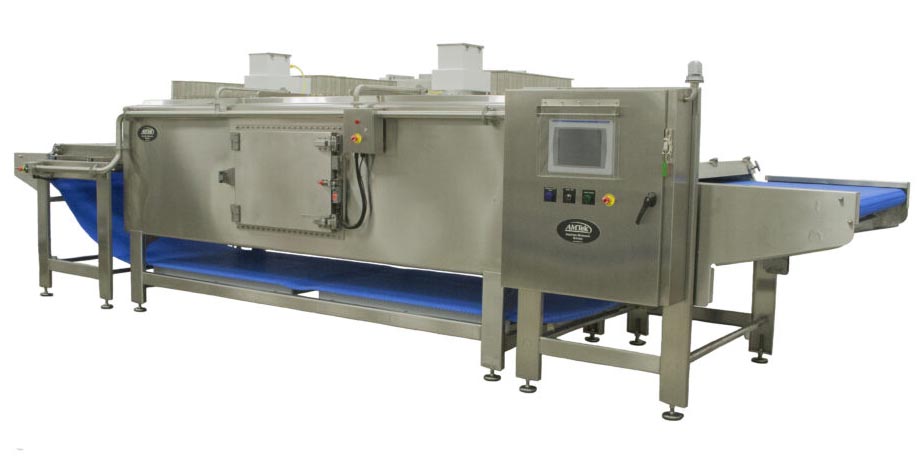Precision Microwave Drying Systems

Key Features
- Low temperature, volumetric drying protects heat sensitive materials
- Capable of drying materials to very low moisture content
- Precision computer controlled closed loop PID temperature control
- Highly reliable, low maintenance Crescend-built solid state microwave generators
- Variable speed conveyor system for continuous processing
- Modular and expandable, can handle from kilograms to tons per hour
- Ovens are 100% stainless steel to meet FDA and NSF requirements.
- Eco-Friendly: 100% electric-powered heating for decarbonization initiatives
- Clean and Emission-Free: combustion-free operation with zero emissions; typically no permitting requirements
Advantages of Microwave Heating
Microwave heating is fundamentally different and superior to conventional drying methods such as convection heating. It is fast, clean, efficient, and precisely controllable. Being 100% electric powered with no emissions, they are environmentally friendly. Microwave systems are used to dry a wide variety of materials including polymers, lithium battery electrolytes, agricultural and food products, biomass, plastics, minerals, ceramics, wood materials, fibers and paper, filter materials, and much more. Microwave systems can handle a wide range of process rates up to hundreds of tons per day.
Precisely Controlled, Low Temperature Drying
Water molecules are highly reactive to microwaves, much more so than most other materials. Radio waves cause strong vibration of water molecules which results in frictional heating, which in turn vaporizes the water. Other substances in the material usually do react as much, so water is selectively heated. One highly beneficial result of this phenomena is that the drying occurs at a low temperature, less than the boiling point of water. Additionally, as many materials are temperature sensitive, microwave drying often produces a higher quality product than possible with other drying methods.
The microwave oven is equipped with IR thermal sensors that measure the temperature of the material inside the oven while it is being heated. The sensor data provides real-time feedback to the microwave’s control computer using a Proportional–Integral–Derivative (PID) control loop. Thanks to the fast power control response time and wide range power control of Crescend solid state generators, the drying temperature can be precisely controlled, typically within one degree.
Fast Volumetric Heating
Microwaves penetrate deeply into the material and heat it uniformly. Other methods such as convection heat the surface of the material and must conduct heat to the interior. This takes time and creates a temperature gradient where the outside temperature is much higher during most of the drying period. This has a profound effect on the drying curve and is the reason why microwave heating is almost always more uniform and much faster than other heating methods.